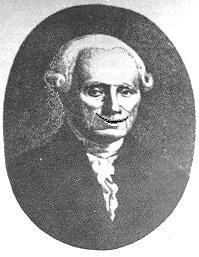Messier's Hit List
Jack Kramer

Within recent years several new deep sky observing lists have appeared. There are the Herschel 400 and the Herschel II, plus the Caldwell, the RASC Best of the NGC, the Albuquerque Astronomical Society's TAAS 200 and others created by different astronomy groups. But the progenitor of all these deep sky observing lists is the one drafted by the French astronomer Charles Messier in the 1780's.
Of course, it was not Messier's intent to author a catalog of the best deep sky objects. His aim was simply to identify those things that might be confused with a comet. It's easy to see why this would be of concern to him. To quote the comet-hunter, Leslie Peltier: "This was a slow and careful search in which I thoroughly surveyed the entire sky, sketching the location of each suspicious object that I saw, learning to recognize by sight the distant nebulae and clusters, the hazy stars, and the little wisps and blobs of light that so closely mimicked comets."
Messier's catalog was not the first such publication. In 1715, Edmund Halley had authored a list of six "nebulae or lucid spots among the fix't stars". These included what we now refer to as the M42 nebula in Orion, the globular star clusters M22, Omega Centauri, and M13, the open star cluster M11 in Scutum, and the Andromeda galaxy M31. In those days, comet hunters seem to have been the ones most concerned about faint fuzzies.
In fact, comets were the main thrust of Messier's career; he discovered 21 of them and followed the orbital movement of 50 others. He also was an avid observer of occultations, eclipses, and sunspots, and he was interested in meteorology. But his concerns didn't really extend to nebulae and star clusters themselves.
Although the Messier numbers go up to M110, there are only 108 objects because the original M40 and M91 are generally considered spurious. There is nothing but a few stars in the positions Messier gave for those two objects. The nature of galaxies was unknown at that time, so they are included as "nebulae" in his original records. The objects M104 to M110 were added after his death, based on evidence that he or his assistant, Pierre Mechain, had observed them but had just not included them in the catalog. Purists, such as Robert Burnham of Celestial Handbook fame, never accepted as legitimate these final seven objects added to Messier's original list.
In many cases, the objects Messier listed had long before been discovered by other observers, a fact that he was careful to note. It is generally believed that Messier himself actually discovered only 39 of the objects in his list. Bright objects such as the Andromeda Galaxy (M31), Perseus Double Cluster, and the Beehive Cluster (M44) were known in antiquity long before the invention of the telescope.
Another thing you may have noticed is that there appears to be no rhyme or reason to the numbering sequence. Most historians agree that the numbers were assigned to objects in the order in which they were brought to Messier's attention, some through his own observation. The Crab Nebula (M1) just ended up being the first deep sky object he recorded.
What is puzzling is the fact that Messier seemed unconcerned about the relative brightness of objects. Why, for example, did he record a somewhat faint object like the Crab Nebula ahead of naked eye objects such as the Andromeda Galaxy and the Beehive Cluster? Moreover, there are a whole bunch of bright objects that he seems to have overlooked. The most obvious is the brilliant Double Cluster in Perseus - it's a naked eye object in a dark sky. Another example is NGC 2903, a magnitude 9.1 galaxy in Leo that is brighter than many other galaxies he recorded in the neighboring constellations Coma and Virgo. This has led historians of astronomy to conclude that Charles Messier's cataloged observations of nebulae and star clusters were purely random and accidental!
Despite the accessibility of Messier objects, it was not until the 1960's that observing all of them really caught on among amateur astronomers. Isabel Williamson of the Montreal Centre of the Royal Astronomical Society of Canada launched the first organized Messier observing program for amateurs, but conceived it as a training ground for "more serious" pursuits like variable star observing. Sidgwick's Observational Astronomy for Amateurs, published in 1955 and considered leading edge in its day, devotes 266 pages to solar system objects, 32 pages to variable stars, 11 pages to binaries, and just one page to "nebulae and clusters"!
Today Messier is most famous, not for his comets, but for this apparently haphazard list. It survives as the stepping off point for all deep sky observers. Only after completing the Messier list do amateur astronomers proceed to other listings that include some of the more challenging targets, plus the many bright objects that Messier overlooked.
I think he would be amused.
Published in the June 2002 issue of the NightTimes




